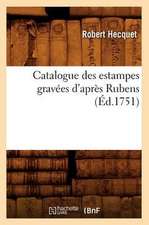Luisa Roldán: Illuminating Women Artists
Autor Catherine Hall-van den Elsenen Limba Engleză Hardback – 20 sep 2021
Luisa Roldán (1652–1706), also known as La Roldana, was an accomplished Spanish Baroque artist, much admired during her lifetime for her exquisitely crafted and painted wood and terracotta sculptures. Roldán trained under her father and worked in Seville, Cádiz, and Madrid. She even served as sculptor to the royal chambers of two kings of Spain. Yet despite her great artistry and achievements, she has been largely forgotten by modern art history.
Written for art lovers of all backgrounds, this beautifully illustrated book offers an important perspective that has been missing—a deeper understanding of the opportunities, and the challenges, facing a woman artist in Roldán’s time. With attention to the historical and social dynamics of her milieu, this volume places Roldán’s work in context alongside that of other artists of the period, including Velázquez, Murillo, and Zurbarán, and provides much-needed insight into what life was like for this trailblazing artist of seventeenth-century Spain.
Preț: 245.02 lei
Nou
Puncte Express: 368
Preț estimativ în valută:
46.90€ • 48.33$ • 39.59£
46.90€ • 48.33$ • 39.59£
Carte disponibilă
Livrare economică 10-24 februarie
Preluare comenzi: 021 569.72.76
Specificații
ISBN-13: 9781606067321
ISBN-10: 160606732X
Pagini: 144
Ilustrații: 81 color and 7 b-w illustrations
Dimensiuni: 191 x 251 x 20 mm
Greutate: 0.77 kg
Editura: Getty Publications
Colecția Getty Publications
Seria Illuminating Women Artists
ISBN-10: 160606732X
Pagini: 144
Ilustrații: 81 color and 7 b-w illustrations
Dimensiuni: 191 x 251 x 20 mm
Greutate: 0.77 kg
Editura: Getty Publications
Colecția Getty Publications
Seria Illuminating Women Artists
Recenzii
"This lavishly illustrated volume provides an invaluable introduction to the figure of Luisa Roldán, a major sculptor of the late seventeenth–century, whose importance scholars have only recently recognized. Drawing on her own extensive archival research and decades of first-hand study of the sculpture, Catherine Hall–van den Elsen offers a sensitive analysis of the works while also setting them effectively in their historical context. Hall–van den Elsen thus presents a nuanced account which reveals the challenges that Luisa faced and largely overcame to establish herself as a prominent artist in a society where few women achieved comparable success. More than the story of one remarkable sculptor, this book also offers insights into the challenges women confronted in seventeenth-century Spain and the artistic production of the period."
—Patrick Lenaghan, Curator, Hispanic Society Museum and Library
"Catherine Hall has produced a book which is a pleasure to read, superbly illustrated, incorporating fascinating details about the society in which Luisa worked, including the challenges she faced as a woman artist. At the same time this monograph is rooted in serious scholarship, discussing the process of some of the commissions, as well as the materials and techniques lying behind the creation of these extraordinary works of art. This is both a highly readable and delightful book."
—Marjorie Trusted, Honorary Senior Research Fellow, Victoria and Albert Museum
—Patrick Lenaghan, Curator, Hispanic Society Museum and Library
"Catherine Hall has produced a book which is a pleasure to read, superbly illustrated, incorporating fascinating details about the society in which Luisa worked, including the challenges she faced as a woman artist. At the same time this monograph is rooted in serious scholarship, discussing the process of some of the commissions, as well as the materials and techniques lying behind the creation of these extraordinary works of art. This is both a highly readable and delightful book."
—Marjorie Trusted, Honorary Senior Research Fellow, Victoria and Albert Museum
“While all this information has been noted by historians, Art Daily reports that the new book by Catherine Hall-van den Elsen brings the artist’s “exquisitely crafted” work to life. That’s because the historian doesn’t just recount the facts of Roldan’s life, but she also “gorgeously illustrated” them with 81 full-color illustrations of the artist’s sculptures [that] “reveals how talented” she was.”
“Makes an important contribution to the existing bibliography . . . and to raising the profile of Roldán's enchanting terracottas, which deserve a catalogue all of their own.”
“Lavishly filled with gorgeous photos.”
“In addition to highlighting her considerable skill in sculpting polychrome wood and terracotta sculptures, Catherine Hall-van den Elsen delves into 17th-century Spanish society, painting a picture of what life would have been like for a woman of the era, and the challenges faced by women artists in particular.”
“[An] exquisite book.”
“A seminal volume not only on this great sculptor but also on the contexts in which she flourished.”
“The high-quality illustrations make the publication attractive and enable useful study of the materials, techniques, and development of the sculptor’s style. Above all, they show the refinement and delicacy of her art. The writing is clear and flows naturally, making the book remarkably accessible.”
“This beautifully illustrated book is written by the world’s expert on Luisa Roldán, whose archival research sheds light on this important Sevillian Spanish sculptor. The book brings together historical details, vivid descriptions of the sculptures, and documented and stylistic attributions to inform and educate the reader. Experts and those new to the topic will both find some takeaways.”
Notă biografică
Catherine Hall-van den Elsen studied Spanish art at La Trobe University in Melbourne, Australia. She completed her MA and PhD on the life and work of Luisa Roldán.
Descriere
Luisa Roldán (1652–1706) was an accomplished Spanish Baroque artist, much admired during her lifetime for her exquisitely crafted and painted wood and terracotta sculptures. This volume places Roldán’s work in context alongside that of other artists of the period, and provides much-needed insight into what life was like for this trailblazing artist of seventeenth-century Spain.



















